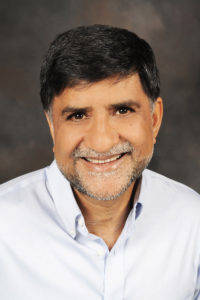What, Exactly, Do Economists Do?
Economist make the world a better placeMy dad was good at math and he loved planes. So he became an aerospace engineer, working first at Douglas Aircraft and then at North American Aviation on several military and civilian projects. I majored in mathematics in college but then went to graduate school to get a PhD in economics. When I told my dad about my decision, his immediate reaction was, “What do economists do?” They clearly don’t build airplanes or spacecraft. Or furniture, automobiles, or houses.
Fast forward to today and some people are still mystified. Alan Jay Levinovitz, an associate professor of philosophy and religion, took a shot at the question and ended up taking potshots that seemed fueled by jealousy:
In 2012, Emory University in Atlanta did away with the visual arts department and its journalism programme. The cutbacks aren’t restricted to the humanities: in 2011, the state of Texas announced it would eliminate nearly half of its public undergraduate physics programmes. Even when there’s no downsizing, faculty salaries have been frozen and departmental budgets have shrunk.
But despite the funding crunch, it’s a bull market for academic economists. According to a 2015 sociological study in the Journal of Economic Perspectives, the median salary of economics teachers in 2012 increased to $103,000 – nearly $30,000 more than sociologists.
Alan Jay Levinovitz, “The new astrology” at Aeon
To his dismay, professors of economics are paid more than professors of philosophy and religion and “Unlike engineers and chemists, economists cannot point to concrete objects – cell phones, plastic – to justify the high valuation of their discipline.”
In his view, economists are pretty good at mathematics but their inscrutable math is just a clever ploy to disguise the fact that economics is merely “a highly paid pseudoscience.”
Yes, there is a lot of math for the sake of math in economics. I have made that argument in several places. In The 9 Pitfalls of Data Science, coauthored with Jay Cordes (Oxford University Press, 2019), the third pitfall is Worshipping Math. However, Levinovitz overstates his case because his understanding of economics is rudimentary and superficial.
A telling example is his distress at being paid less than economists. David Alexander, a former president of Pomona College, once said that, colleges and universities are a refuge for otherwise unemployable scholars—such as professors of philosophy and religion. One economic explanation for why economists, along with professors in several other fields, are paid relatively well is that their alternatives are attractive. They do things that businesses value and are willing to pay for.
They also do many things that are immensely valuable for society. During the Great Depression of the 1930s, the federal government was flying blind and clueless. It had almost no useful economic data and so little understanding of economics that its policies were exactly the reverse of useful.
For example, when Franklin Roosevelt campaigned for president in 1932, he called Herbert Hoover’s federal budget “the most reckless and extravagant that I have been able to discover in the statistical record of any peacetime government anywhere, anytime.” He promised to balance the budget by reducing government spending by 25 percent. One of the most respected financial leaders, Bernard Baruch, advised Roosevelt to, “Stop spending money we haven’t got. Sacrifice for frugality and revenue. Cut government spending—cut it as rations are cut in a siege. Tax—tax everybody for everything.”

So the Federal Reserve allowed the money supply to fall by a third and, in 1930, Congress passed the Smoot-Hawley Tariff Act which raised taxes on imported goods to record levels. Other countries retaliated by raising their taxes on goods imported from the United States. Worldwide trade collapsed, with U.S. exports and imports falling by more than 50 percent. (The image above shows an impoverished American family in Oklahoma, 1936, Public Domain)
Today, thanks to economists and their models, we (well, most of us) know that cutting spending, raising taxes, reducing the money supply, and engaging in trade wars are exactly the wrong policies for fighting an economic recession.
During the economic crisis that began in the United States in 2007, the President, Congress, and Federal Reserve did not repeat the errors of the 1930s. Faced with a credit crunch that threatened to pull the economy into a second Great Depression, the government did the right thing by pumping billions of dollars into a deflating economy. Ditto with the current COVID-19 economic collapse.
Perhaps even more important has been the economists’ persuasive arguments for the virtues of a market economy instead of a centrally planned economy.
At the microeconomic level, all sorts of beneficial government policies are firmly based on economic models and empirical analyses. Indeed, the kings and queens of the profession are now empirical economists, not the ivory-tower mathematicians that Levinovitz is obsessed with. For example, the most recent Nobel awards in economics were given to Abhijit Banerjee, Esther Duflo, and Michael Kremer “for their experimental approach to alleviating global poverty.”
One example of such work is the research being done by my colleague, Tahir Andrabi, in Pakistan (below right), where forty percent of the population over the age of 15 is illiterate.

In 2010, Nicholas Kristof wrote,
The public education system, in particular, is a catastrophe. I’ve dropped in on Pakistani schools where the teachers haven’t bothered to show up (because they get paid anyway), and where the classrooms have collapsed (leaving students to meet under trees). Girls have been particularly left out. In the tribal areas, female literacy is 3 percent.
Nicholas Kristof, “Pakistan and Times Sq.” at New York Times
Three Pakistani economists (Tahir Andrabi, Jishnu Das, and Asim Ijaz Khwaja) have spent nearly 20 years studying Pakistan’s education system, trying to identify practical ways to fix what is clearly broken.
One experiment involved 112 villages in the rural Punjab province in Pakistan, with an average of 7.3 schools per village, some private and some public. Families rarely send their children to schools outside their village but they know little about the schools in their village beyond the location and cost. Many families assumed, reasonably enough, that more expensive schools are better schools—perhaps high-cost schools spend more money on teachers and supplies or perhaps they can charge more because the demand for the high-quality education they provide is greater.
The economists reasoned that parents could make better-informed choices if they had hard evidence of school performance and that schools might respond to parents’ better-informed choices by trying harder to deliver a quality education. So they collected standardized test scores and did an experiment: They randomly separating villages into two groups. In half the villages, parents were sent report cards showing their children’s performance, along with the performance of all the private and public schools in the village. The other half was the control group of villages in which the parents did not receive report cards.
The results were astonishing. In the villages receiving report cards, many of the worst performing private schools went out of business. The remaining schools (both private and public) made progress. Test scores increased by 42 percent compared to schools in the control villages, while private school tuition dropped by 17 percent. High-priced schools evidently could not rely on their reputation to attract students. They had to offer a better education or make it less expensive.
In another set of experiments, villages were randomly separated into three groups. In the first group of villages, a single, randomly selected private school was given an unconditional cash grant of 50,000 Rupees (worth about $500 at the time). Private schools in rural Punjab generally have modest budgets, with median annual revenue of only $3,300, so a $500 grant is a big deal. In the second set of villages, every private school was given 50,000 Rupees. No grants were given to schools in the third group of villages.
Even though the grants were unconditional, the schools invested the money in their schools. They evidently wanted to spend more but were unable to do so because their resources were limited. Schools in the first group (one grant per village) mostly spent their grants on desks, chairs, and computers that enabled them to increase their enrollment and revenue; there were no changes in their test scores. In addition to facilities improvements, schools in the second group (where grants were awarded to all private schools) increased teacher salaries, evidently to retain and recruit good teachers because they were competing against other schools that also received grants. Enrollment increased by less than half that of the first group and, in contrast to the first group, test scores increased.
While a private individual might prefer giving money to a single school, the economists argued that government grants to all schools are socially preferable because they increase teacher quality and test scores.
An educational revolution is underway in Pakistan, supported by evidence-based experiments. A third of all students in Pakistan now go to low-cost private schools which, overall, outperform government schools by all reasonable measures. Female literacy is surging and female college students now outnumber males.
Economists may not build airplanes or assemble phones, but they are making the world a better place.
More by Gary Smith:
Vitamin D and COVID-19: Is it data or noise? Because random clusters occur naturally in large numbers, only randomized, controlled trials can tell us.
and
Data mining: A plague, not a cure It is tempting to believe that patterns are unusual and their discovery meaningful; in large data sets, patterns are inevitable and generally meaningless. (Gary Smith)
